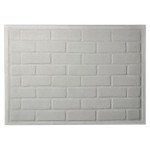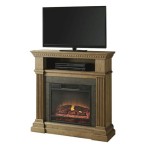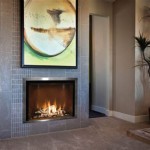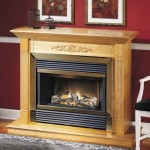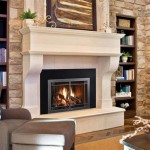Corner Fireplace Living Room Design Ideas
A corner fireplace presents a unique set of opportunities and challenges in living room design. Unlike a traditional fireplace centered on a wall, a corner placement requires careful consideration of furniture arrangement, focal point creation, and overall room flow. Optimizing the space while maximizing the fireplace's visual appeal necessitates a strategic approach. This article explores various design ideas for living rooms featuring corner fireplaces, offering insights into layouts, styles, and decorative elements that create a cohesive and inviting atmosphere.
One of the initial considerations is determining the architectural style of the fireplace itself. Is it a modern, minimalist design, a rustic stone structure, or a classic brick finish? The existing style will influence the selection of complementary furniture, color palettes, and accessories. For instance, a contemporary corner fireplace often benefits from clean lines and neutral tones, while a rustic fireplace can be enhanced with natural materials and warm, earthy colors.
Another crucial element is understanding the room's dimensions and natural light sources. A smaller living room will require a different approach than a large, open-concept space. Maximizing natural light and avoiding overcrowding are essential for creating a comfortable and functional living area. Equally important is ensuring the fireplace remains a focal point without overwhelming the overall design.
Furniture Arrangement Around a Corner Fireplace
Arranging furniture around a corner fireplace requires a thoughtful approach to create a balanced and inviting space. The primary goal is to define a seating area that is both functional and aesthetically pleasing, while also allowing for comfortable viewing of the fireplace. Several strategies can be employed to achieve this balance.
One common approach is to position a sofa facing the corner fireplace, creating a clear focal point. This arrangement works particularly well in rectangular rooms where the sofa can anchor the space and provide ample seating. To complement the sofa, consider adding armchairs or accent chairs angled towards the fireplace, fostering conversation and creating a cohesive seating arrangement. A coffee table placed in the center of the seating area provides a surface for drinks, books, and decorative items.
Another option is to create an L-shaped seating arrangement, with a sofa along one wall and additional seating extending from the corner fireplace. This layout is suitable for larger living rooms where more seating is required. The L-shape defines the conversation area and creates a sense of intimacy. To balance the arrangement, consider adding a console table or bookshelf along the wall opposite the fireplace.
In smaller living rooms, maximizing space is crucial. Consider using smaller-scale furniture, such as loveseats or armchairs, to avoid overcrowding the room. A corner sectional sofa can also be an effective solution, as it provides ample seating while fitting neatly into the corner of the room. To create visual interest, consider adding a rug to define the seating area and anchor the furniture arrangement.
Regardless of the seating arrangement chosen, it is essential to ensure that there is adequate space for movement and circulation. Avoid blocking pathways and ensure that there is enough room for people to comfortably walk around the furniture. A well-planned layout will enhance the functionality and comfort of the living room.
Decorating the Space Above and Around the Fireplace
The area above and around a corner fireplace offers a prime opportunity to enhance its visual appeal and create a personalized focal point. Consider various decorative elements to complement the fireplace's style and the overall design of the living room. The specific choices will depend on the fireplace's aesthetic, from modern to rustic.
For a modern fireplace, a minimalist approach often works best. Consider hanging a large piece of abstract art above the fireplace, creating a striking visual statement. Alternatively, a sleek mirror can reflect light and create the illusion of more space. Avoid cluttering the area with too many small objects, as this can detract from the clean lines and contemporary feel.
A rustic fireplace can be enhanced with natural materials and textures. Consider adding a wooden mantel or shelf above the fireplace, providing a surface for displaying decorative items. Antique tools, vintage signs, or nature-inspired artwork can complement the rustic aesthetic. Stone or brick accents around the fireplace can also enhance its natural charm.
For a classic fireplace, consider displaying traditional artwork, family photos, or decorative vases. A mantel clock can add a touch of elegance and sophistication. Symmetry is often key in classic design, so consider balancing the display on either side of the fireplace with matching candlesticks or decorative objects.
In addition to the area above the fireplace, consider decorating the space around it. Potted plants can add a touch of greenery and life to the room. Baskets filled with firewood can be both functional and decorative. A comfortable armchair placed beside the fireplace can create a cozy reading nook. The key is to create a balanced and inviting atmosphere that complements the fireplace's style.
Furthermore, consider the lighting in the area around the fireplace. Soft, warm lighting can create a cozy and inviting atmosphere. Use a combination of ambient lighting, task lighting, and accent lighting to create a balanced and layered lighting scheme. Dimmer switches can be used to adjust the lighting levels to suit different moods and occasions.
Integrating the Fireplace into the Overall Room Design
A corner fireplace should not be viewed as an isolated element, but rather as an integral part of the overall living room design. Integrating the fireplace seamlessly into the room requires careful consideration of color palettes, materials, and architectural details. The goal is to create a cohesive and harmonious space that reflects the homeowner's personal style.
Color palettes play a crucial role in tying the fireplace into the overall room design. Choose colors that complement the fireplace's style and the furniture in the room. Neutral colors, such as whites, grays, and beiges, are versatile and can work well with a variety of fireplace styles. Accent colors can be used to add pops of color and visual interest.
The materials used in the room should also complement the fireplace. If the fireplace is made of stone, consider incorporating stone accents elsewhere in the room, such as on a feature wall or in decorative accessories. If the fireplace is made of brick, consider using brick accents in other areas of the room, such as on a backsplash or in a decorative planter.
Architectural details can also be used to integrate the fireplace into the overall room design. Consider adding crown molding or baseboards that complement the fireplace's style. Built-in shelves or cabinets around the fireplace can provide storage and create a cohesive look. A custom-designed mantel can enhance the fireplace's visual appeal and tie it into the overall design.
Consider the scale and proportion of the fireplace in relation to the room's dimensions. A large fireplace can overwhelm a small room, while a small fireplace can get lost in a large room. Choose a fireplace size that is appropriate for the size of the room. The placement of the fireplace should also be carefully considered. Placing the fireplace in a corner can maximize space and create a focal point, but it is important to ensure that the fireplace is accessible and that the surrounding area is well-lit.
By carefully considering color palettes, materials, and architectural details, it is possible to seamlessly integrate a corner fireplace into the overall living room design, creating a cohesive and inviting space. The fireplace should be viewed as an integral part of the room, rather than an isolated element, and should be designed to complement the overall style and aesthetic.
Ultimately, designing a living room with a corner fireplace involves a balance of aesthetics and practicality. By considering the fireplace's style, the room's dimensions, and the desired atmosphere, homeowners can create a space that is both visually appealing and functionally comfortable. Careful planning and attention to detail are essential for achieving a successful and harmonious design.

How To Design Around A Corner Fireplace

How To Arrange Furniture With A Corner Fireplace Setting For Four Interiors

Working With A Corner Fireplace Emily Clark

How To Arrange Furniture With A Corner Fireplace Setting For Four Interiors

Home Staging Project Orange County Ca Decor

Top 15 Small Living Room With Fireplace And Tv Decorating Ideas Furniture Layout Corner Comfy Decor

Corner Fireplace Ideas How To Design Around An Awkward Feature

Arranging Furniture With A Corner Fireplace Brooklyn Berry Designs

Conquering The Corner Fireplace

Are You Looking For Some Amazing Ideas Your New Corner Fireplace Explore T Living Room Awkward Layout
Related Posts

